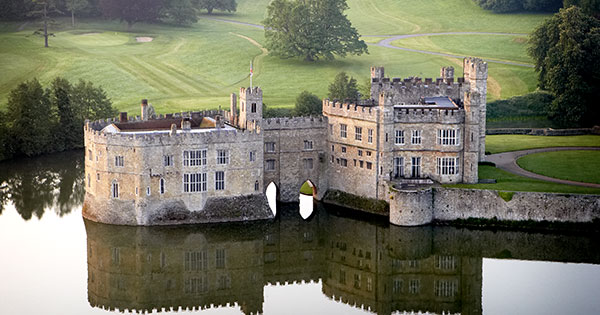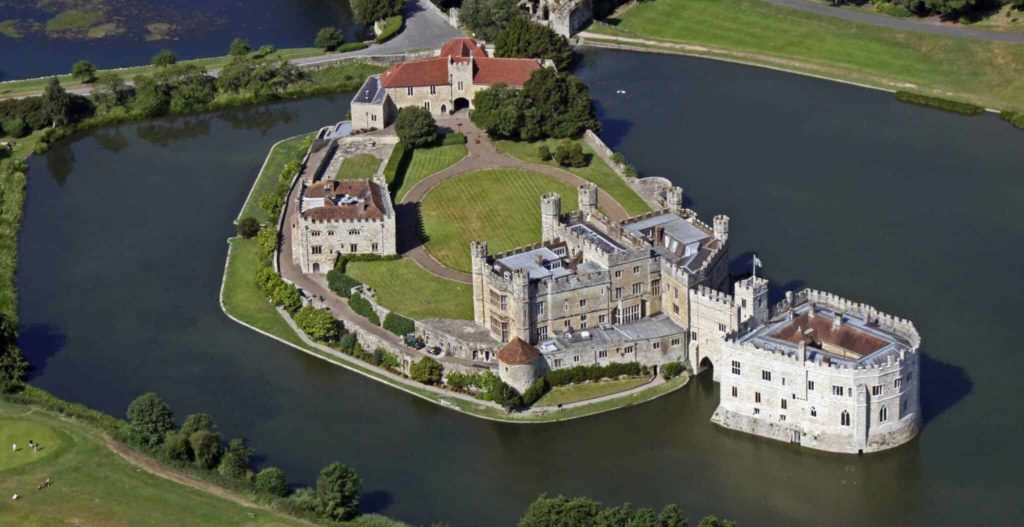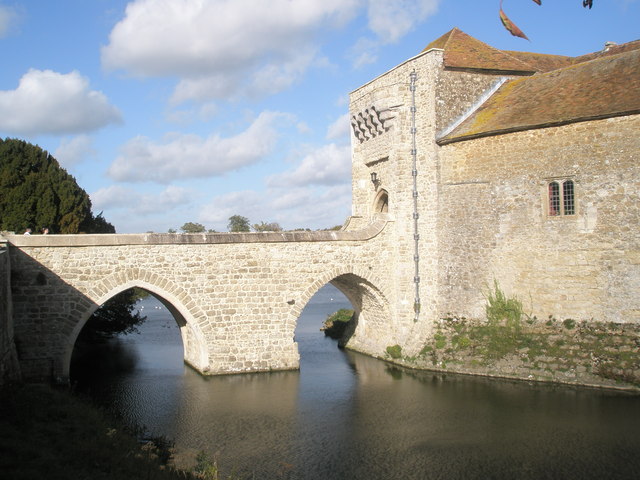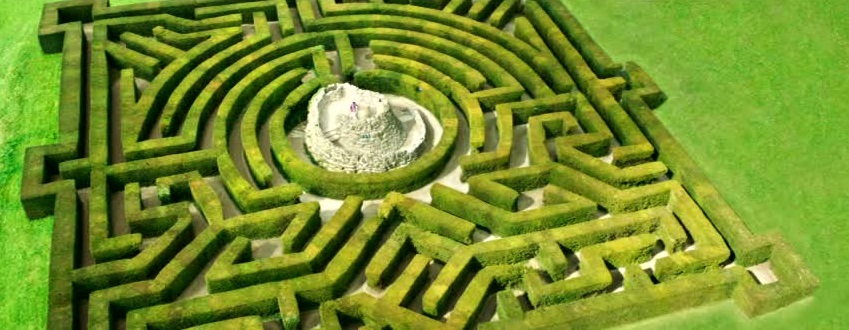Leeds Castle is a castle in Kent, England, 5 miles (8 km) southeast of Maidstone. It is built on islands in a lake formed by the River Len to the east of the village of Leeds.
Leeds Castle has been a Norman stronghold; the private property of six of England’s medieval queens; a palace used by Henry VIII and his first wife Catherine of Aragon; a Jacobean country house; a Georgian mansion; an elegant early 20th century retreat for the influential and famous; and in the 21st century, it has become one of the most visited historic buildings in Britain.
From 857 the site was owned by a Saxon chief called Led or Leed who built a wooden structure on two islands in the middle of the River Len
The first historical record of a building is listed in the Domesday Survey of 1086, where the ‘Manor of Esledes’ was owned by Odo the Bishop of Bayeux, who was also the half-brother of William the Conqueror. Just a few years later Odo’s nephew, the newly crowned King William ‘Rufus’ II, became displeased with his Uncle’s behaviour and granted the estate to Hamo de Crevecoeur, whose descendants continued to own the estate for the next 175 years.
In 1119 the first stone Castle was erected by Hamo’s grandson Robert, who took advantage of the natural rocky outcrops that formed two islands in the River Len. The main fortification called a Keep was on the smaller island where the Gloriette now stands, and the domestic buildings that supported everyday life, were located on the larger island, known as the Bailey.
The two islands were linked by a drawbridge over the water that could be drawn up to protect the Keep if the Castle was ever under attack.
Leeds
Castle had its first encounter with royal politics in 1139 when it was
besieged by King Stephen. The de Crevecoeur family had declared their
support for the Empress Matilda’s claim to the throne, following the
death of her father Henry I, when Stephen had unexpectedly seized
control. His claim was through his grandfather William the Conqueror,
and he was victorious. The de Crevecoeur family managed to survive the
siege and retain ownership of the Castle.
Only a few architectural features survive from the 12th Century building phase, such as the two-light window at the end of the banqueting hall and the cellar beneath the Heraldry room.
Leeds Castle Maze
The Maze consists of 2,400 yew trees and when viewed from the centre, part of its plan mirrors a queen’s crown.
It is set in a square, and yet, when seen from the mound or the air, the pattern is circular, this is unique to Leeds Castle and adds to the difficulty in solving it.
Source: https://www.leeds-castle.com/






Comment here